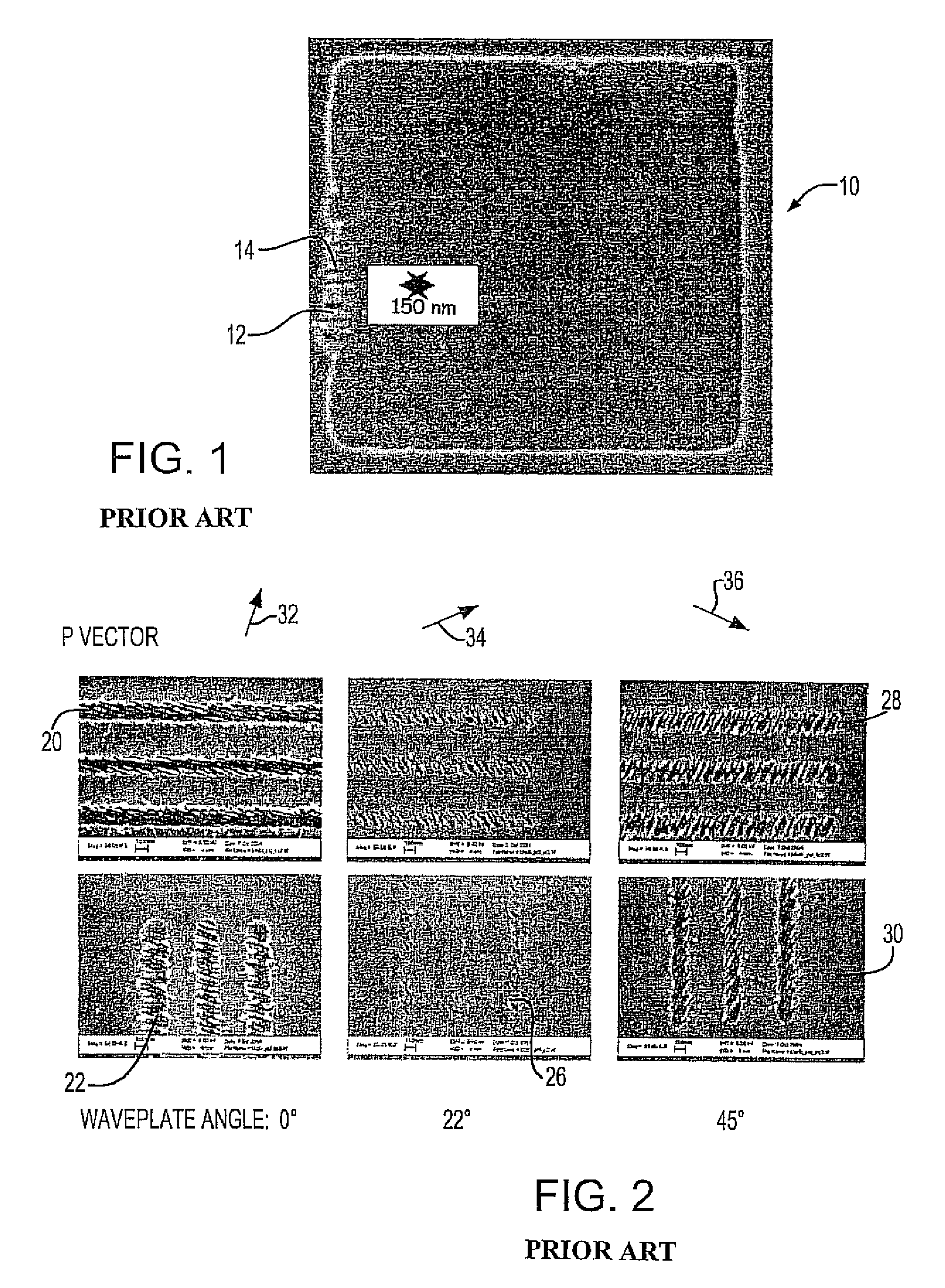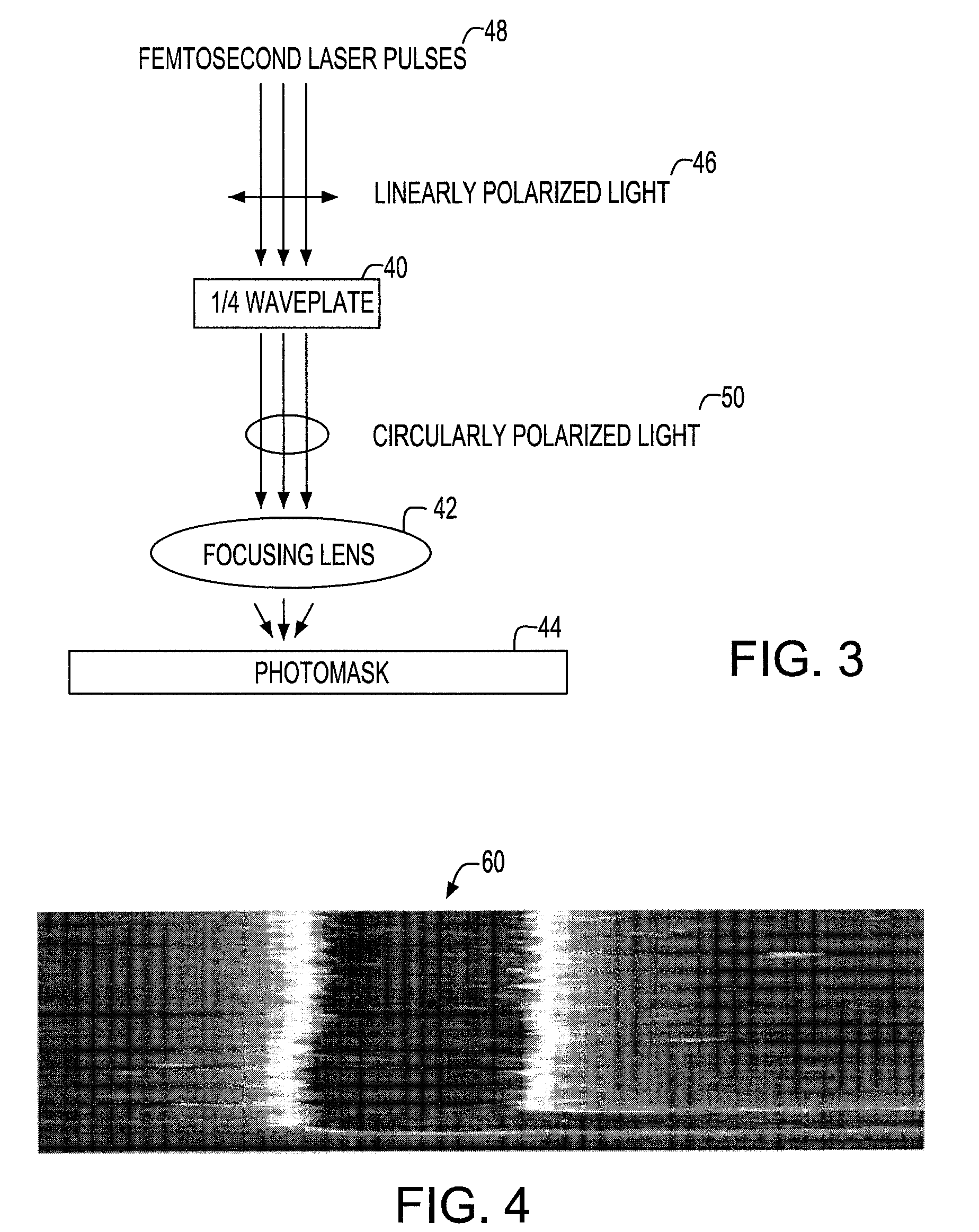System and method for eliminating the structure and edge roughness produced during laser ablation of a material
a laser ablation and structure technology, applied in the field of laser ablation, can solve the problems of degrading the optical quality of the repaired photomask, and achieve the effect of eliminating any undue edge roughness or structur
- Summary
- Abstract
- Description
- Claims
- Application Information
AI Technical Summary
Benefits of technology
Problems solved by technology
Method used
Image
Examples
Embodiment Construction
[0017]Defects are commonly encountered during the fabrication of a photomask, whereby these defects generally consist of extra (unwanted) material that must be removed in order to create a perfect photomask. Femtosecond lasers can be used to ablate this extra material, thus removing the defect. Hereby, the placement and spatial sharpness of the edge of the repaired region is critical to producing a high quality photomask. Anything that detracts from the placement and spatial sharpness of the repaired edge must be avoided.
[0018]Referring to FIG. 1, there is represented a picture of a repaired photomask 10 in which a defect was removed by femtosecond laser ablation of a repair site 12. Laser ablation typically produces a highly periodic structure 14, which degrades the optical quality of the repaired edge 16. This periodic structure 14 can be traced to the polarization of the laser beam, which is used to ablate the material.
[0019]Referring to FIG. 2, there are illustrated images of pe...
PUM
| Property | Measurement | Unit |
|---|---|---|
| periodic structure | aaaaa | aaaaa |
| voltage | aaaaa | aaaaa |
| roughness | aaaaa | aaaaa |
Abstract
Description
Claims
Application Information
 Login to View More
Login to View More - R&D
- Intellectual Property
- Life Sciences
- Materials
- Tech Scout
- Unparalleled Data Quality
- Higher Quality Content
- 60% Fewer Hallucinations
Browse by: Latest US Patents, China's latest patents, Technical Efficacy Thesaurus, Application Domain, Technology Topic, Popular Technical Reports.
© 2025 PatSnap. All rights reserved.Legal|Privacy policy|Modern Slavery Act Transparency Statement|Sitemap|About US| Contact US: help@patsnap.com



